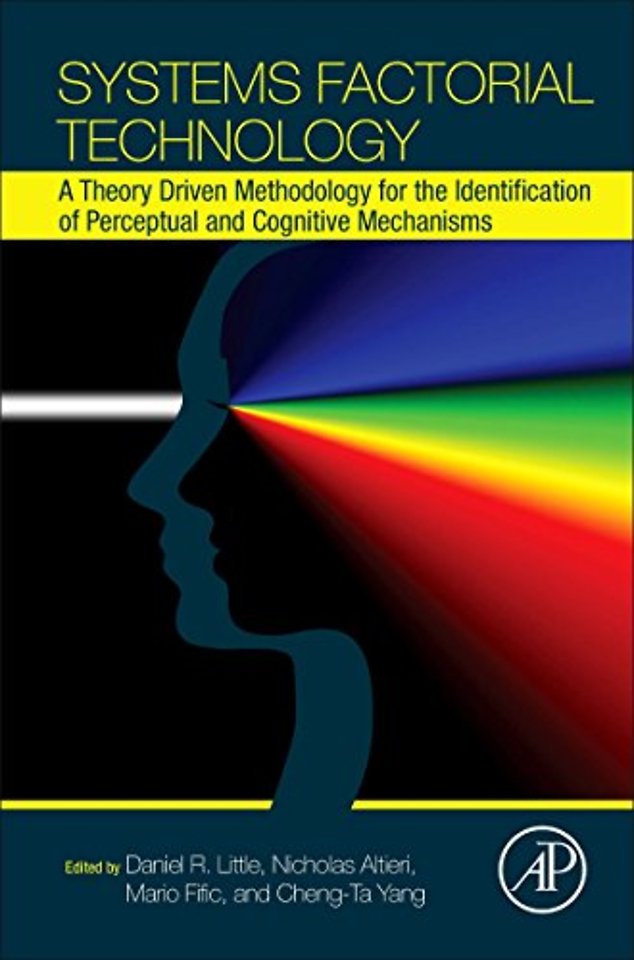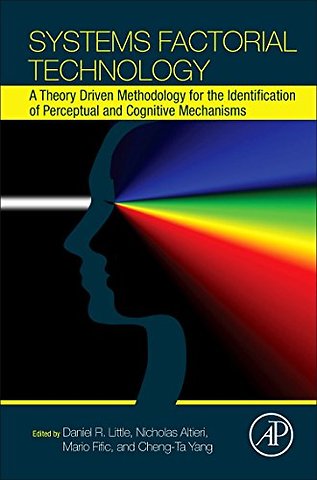<p>I. Introduction to Systems Factorial Technology<br>1. Historical Foundations and a Tutorial Introduction to Systems Factorial Technology<br>Nicholas Altieri, Mario Fific, Daniel Little and Cheng-Ta Yang <br>2. Stretching Mental Processes: An Overview of and Guide for SFT Applications<br>Mario Fific and Daniel Little </p> <p>II. Recent Advances in Systems Factorial Technology<br>3. Statistical analyses for Systems Factorial Technology<br>Joseph Houpt and Devin Michael Burns <br>4. Development and Applications of the Capacity-Function that Measures Accuracy<br>Nicholas Altieri<br>5. Selective Influence And Categorical Separability (Perceptual Separability) In Perception And Cognition: Similarities And Distinctions<br>James T. Townsend, Yanjun Liu and Jennifer Lentz <br>6. Bridge-Building: SFT Interrogation of Major Cognitive Phenomena<br>Daniel Algom, Daniel Fitousi and Ami Eidels <br>7. An Examination of Task Demands on the Elicited Processing Capacity<br>Leslie Blaha<br>8. An Information Processing Perspective to Understanding Conflicting Information<br>Xue Jun Cheng, Sarah Moneer, Nicole Elise Christie and Daniel Little </p> <p>III. Applications of Systems Factorial Technology<br>9. Applying the Double Factorial Paradigm to Detection and Categorization Tasks: An Example Using Audiovisual Speech Perception<br>Nicholas Altieri<br>10. Attention and Perceptual Decision Making<br>Cheng-Ta Yang<br>11. Are Two Ears Always Better than One? The Capacity Function Says No<br>Yuan He, Jennifer Lentz and James T. Townsend <br>12. Logical-rule Based Models of Categorization: Using Systems Factorial Technology to Understand Feature and Dimensional Processing<br>David william Griffiths, Anthea Grace Blunden and Daniel Little <br>13. Applying Systems Factorial Technology to Discrete Accumulators with Varying Thresholds<br>Bradley Harding, Vincent LeBlanc, Marc-Andre Goulet and Denis Cousineau <br>14. Can Confusion-Data Inform Systems Factorial Technology-Like Inference? A Comparison of SFT and Accuracy-Based Measures in Comparable Experiments<br>Zachary L. Howard, Ami Eidels, Noah H. Silbert, and Daniel R. Little<br>15. The Advantages of Combining the Simultaneous-Sequential Paradigm with Systems Factorial Technology<br>Piers Douglas Howe and Adam Ferguson </p> <p>IV. Bridging Levels of Explanation<br>16. The Continuing Evolution of Systems Factorial Theory: Connecting Theory with Behavioral and Neural Data<br>Michael Wenger, Erin Ingvalson and Stephanie Rhoten <br>17. Using Systems Factorial Technology to Elucidate the "f" of Clinical fMRS (functional Magnetic Spectroscopy<br>Reggie Taylor, Jean Theberge, Peter Williamson, Maria Densmore and Richard Neufeld <br>18. Applications of Capacity Analysis into Social Cognition Domain<br>Alla Yankouskaya, Jie Sui, Zahra Moradi, Pia Rotshtein, and Glyn W. Humphreys</p>

